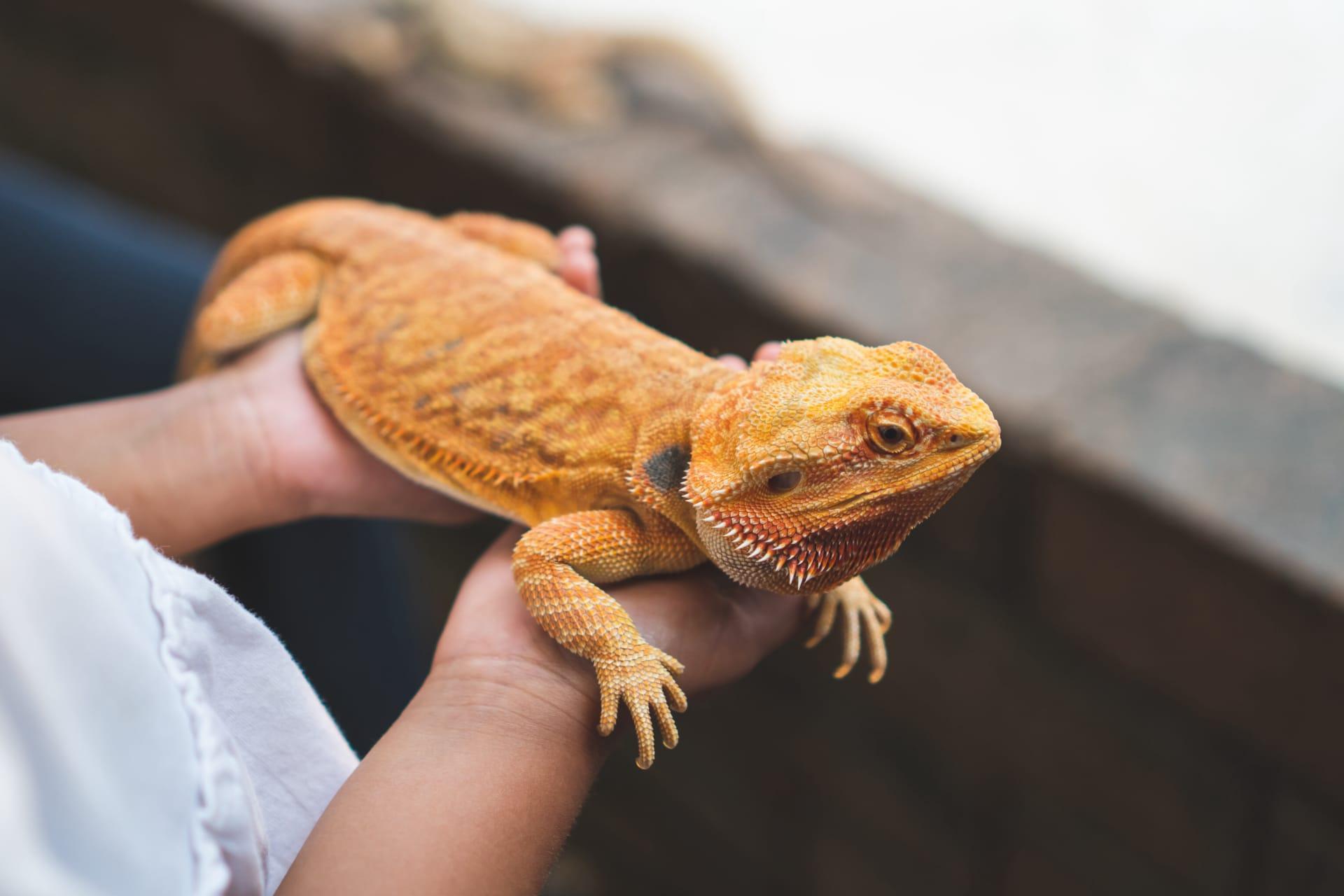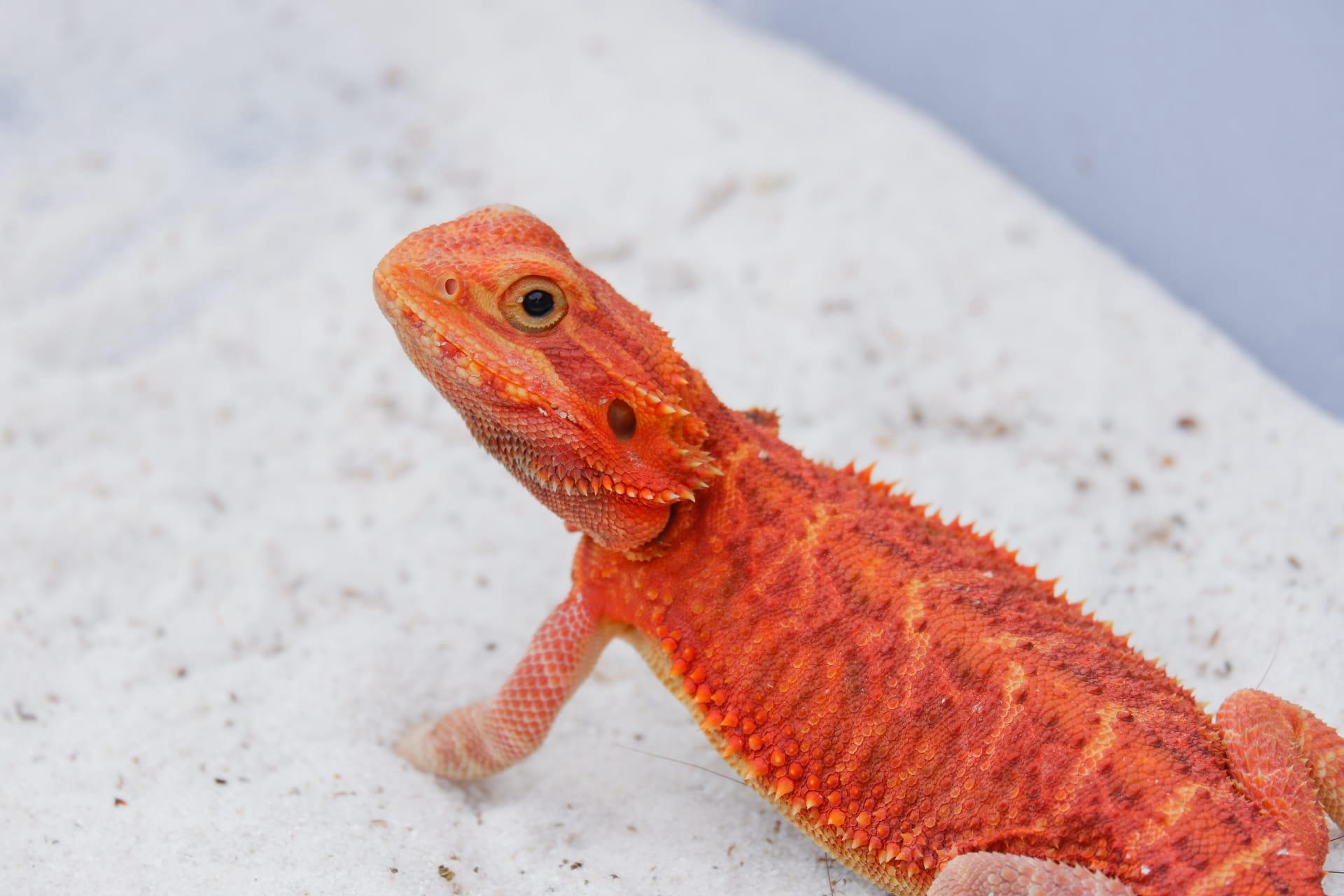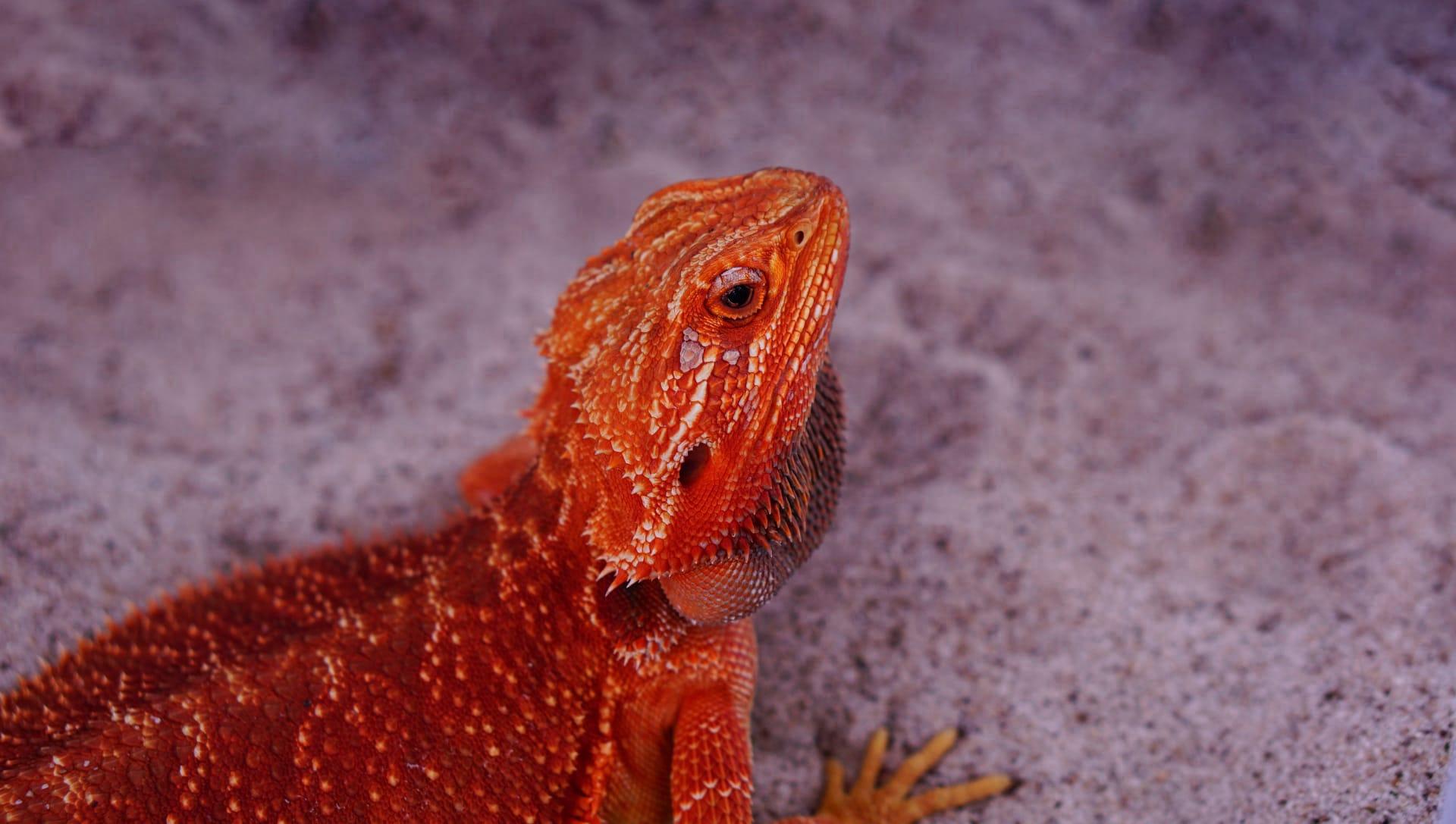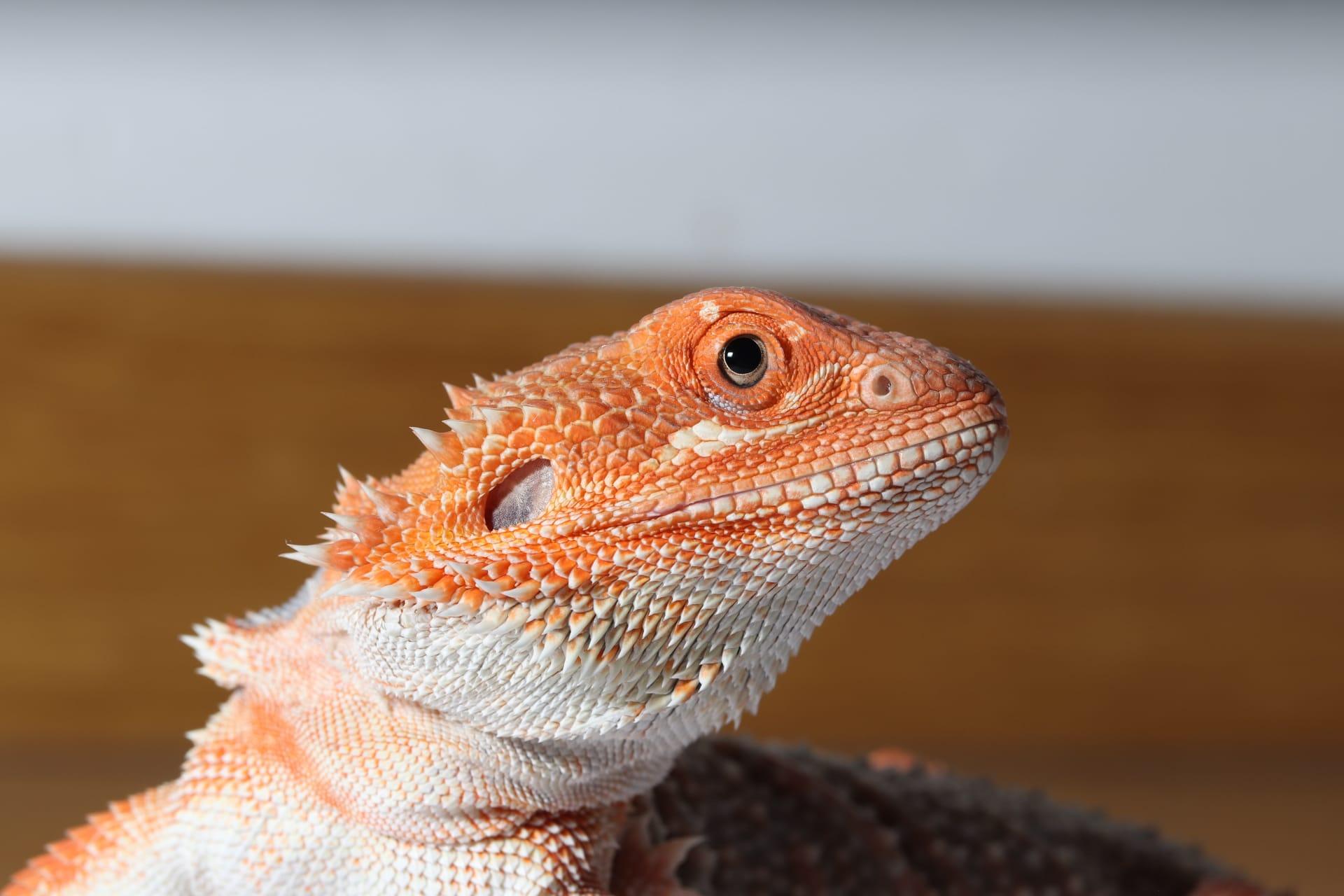Red Bearded Dragon Trivia
- Home /
- Trivia Question /
- Animal /
- Red Bearded Dragon Trivia
1
Question: What distinguishes a Red Bearded Dragon from other bearded dragon species?
Answer: Red Bearded Dragons, known scientifically as Pogona vitticeps, stand out due to their unique red coloration, which varies from a deep rust hue to a bright orange-red. This coloration is a result of selective breeding and isn't found in wild species. They typically measure about 18 to 24 inches in length and weigh around 380 to 510 grams when fully grown.
Question: How long do Red Bearded Dragons live, and what factors contribute to their lifespan?
Answer: Red Bearded Dragons can live up to 10-12 years in captivity, provided they receive proper care. Factors influencing their lifespan include a balanced diet, appropriate habitat temperature, UVB lighting for vitamin D3 synthesis, and regular veterinary check-ups to prevent common health issues like metabolic bone disease.

2
Question: Is it true that Red Bearded Dragons can live without water for long periods?
Answer: This is a misconception. While Red Bearded Dragons are desert animals and can survive with less water, they still require regular hydration. They often get moisture from their diet, which includes leafy greens and vegetables, but they also need access to clean water. Dehydration can lead to serious health issues.
Question: Can Red Bearded Dragons change their color like chameleons?
Answer: Unlike chameleons, Red Bearded Dragons don't change colors as a means of camouflage. However, they can exhibit color changes due to temperature variations, mood, or health conditions. For instance, a darker color can help absorb more heat, while a lighter color might indicate stress or illness.

3
Question: What is the ideal diet for a Red Bearded Dragon, and how often should they be fed?
Answer: A balanced diet for Red Bearded Dragons includes a mix of insects like crickets or mealworms, and vegetables like kale, bell peppers, and squash. Juveniles require more frequent feeding (1-2 times per day) with a higher percentage of protein, while adults can be fed once every two days with more emphasis on vegetables.
Question: Are Red Bearded Dragons social creatures that enjoy human interaction?
Answer: Red Bearded Dragons are generally solitary but can become accustomed to human interaction. They are known for their docile temperament and can even show signs of recognition towards their owners. Regular, gentle handling can strengthen this bond, but it's important to respect their space and avoid over-handling.

4
Question: What type of habitat is best suited for a Red Bearded Dragon in captivity?
Answer: A suitable habitat for a Red Bearded Dragon includes a terrarium of at least 40 gallons with a basking area and a temperature gradient ranging from 75-85°F (24-29°C) in the cooler area to 95-110°F (35-43°C) in the basking area. They also require UVB lighting for proper vitamin D3 synthesis and a substrate like newspaper or tile for easy cleaning.
Question: How does a Red Bearded Dragon communicate and express its mood or needs?
Answer: Red Bearded Dragons communicate through body language. A puffed-up beard can indicate aggression or fear, while arm-waving is a sign of submission. Head-bobbing can be a display of dominance, especially in males. Understanding these cues is crucial for interpreting their needs and ensuring their well-being.

5
Question: What are the common health issues faced by Red Bearded Dragons, and how can they be prevented?
Answer: Common health issues include metabolic bone disease, caused by inadequate UVB light and calcium deficiency, and respiratory infections due to improper habitat temperatures. Regular veterinary check-ups, a balanced diet, appropriate lighting, and habitat temperature control are essential for prevention.
Question: Can Red Bearded Dragons be housed together, and what are the considerations?
Answer: While juvenile Red Bearded Dragons can coexist, adults should generally be housed separately to prevent territorial aggression, especially between males. If housed together, it's important to monitor them for signs of stress or aggression and provide ample space, food, and basking areas to minimize competition.